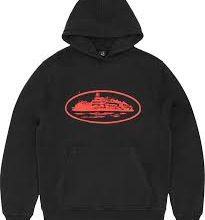Everything You Need to Know About Membrane Filter Press

A membrane filter press is an industrial filtration method that can be used to remove solids from liquids at a fast rate. Membrane filter press are mostly used in the food, beverage, chemical, and pharmaceutical industries. If you’re looking to use one of these in your business, or if you need to replace an old or broken one, this guide will help you understand how they work and how to properly maintain them so they run smoothly.
With so many options to choose from, it can be hard to decide which type of membrane filter press you need. Read on to find out how they work, what they’re made of, and more!
What Are the Different Types?
The first step in figuring out whether a Membrane filter press is right for you is understanding what options you have. In broad strokes, there are two kinds of membranes that can be used in press filtering: hydrophilic and hydrophobic. Hydrophilic (water-loving) membranes include cellulose acetate, polyvinylidene fluoride (PVDF), and polyethersulfone (PES). Hydrophobic (water-fearing) membranes, meanwhile, include nitrile rubber and pore sizes ranging from 0.2 microns to 100 microns are also available. That said, not all filter press require a specific membrane; there are some general-purpose machines that support more than one type of membrane.
How Do They Work?
A membrane filter press uses high pressure and extremely small pores in special filters. It works just like a sieve, but on a much smaller scale. The liquid is forced between two plates covered with holes that are smaller than water molecules. The end result is clean water on one side and dirty water on the other; particles get stuck in between and can be recovered for reuse or disposed of properly.
Which One Is Right For Me?
There are a lot of out there, so when shopping for one, it’s important to consider what will work best for your company and Largest filter press manufacturer needs. To determine which filter press is right for you, start by determining what volume of production you will be running. There are a variety of types of membrane filter press that run at different flow rates and produce different volumes. For example, if you want something that runs faster but produces less volume than a slower press, then you might want to consider other options. Make sure you take into account not only how much space in your facility each press would take up but also what size tank each one comes with — smaller tanks mean higher maintenance requirements.
Things to Consider Before Buying a System
Before you even think about how much a system costs, or which one best suits your needs, you’ll want to make sure you understand exactly what it is that you want out of a press. For example, do you have enough water? If not, are there ways to increase your water supply? What about labor? Are there employees who could operate a membrane filter press? Once you’ve answered these questions and figured out your real requirements, then it’s time to look at systems.
Choosing a Supplier
Before looking for a supplier, it is critical that you decide what type of Automatic filter press will best suit your specific needs. A good first step is to determine how much capacity and filtration rate you require and how much investment you willing to put into your new system. These specifications help narrow down your options, enabling you make an informed decision about who provide your membrane filter press. Another factor in choosing a supplier is location. most suppliers located in countries near their clients so international shipping become expensive if you select a company far away from where you reside or plan on operating.
How to Use It Effectively?
Most of us have run into a situation where we’ve got a large quantity of something nasty and have no place to put it. Whether you’re a plumber who just removed some piping from under a house or you work in construction, chances are good that you’ve at least once found yourself knee-deep in sewage or mud. If that’s never happened, consider yourself lucky. you won’t ever forget what happens when your shoes and hands get covered in filth like that! Luckily, we membrane filter press (MFPs) for situations like these. These specialized machines help remove water contaminants more efficiently than by hand alone.
Maintenance Tips and Tricks
A membrane filter press works by filtering out particles and other contaminants. While they perform an important role in reducing waste and producing clean, clear water, they do require regular maintenance. Such as replacing filters and keeping it all running smoothly. Make sure you stay on top of maintenance tasks so that you have a continuous flow of clean water coming from your system. Use these tips below for a few tricks that will keep your membrane filter press in tip-top shape!





